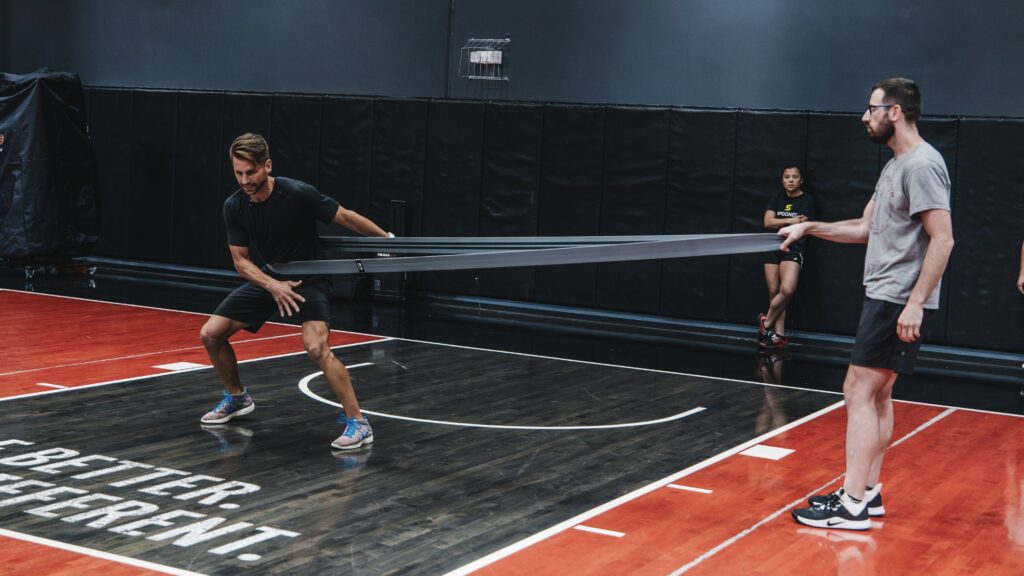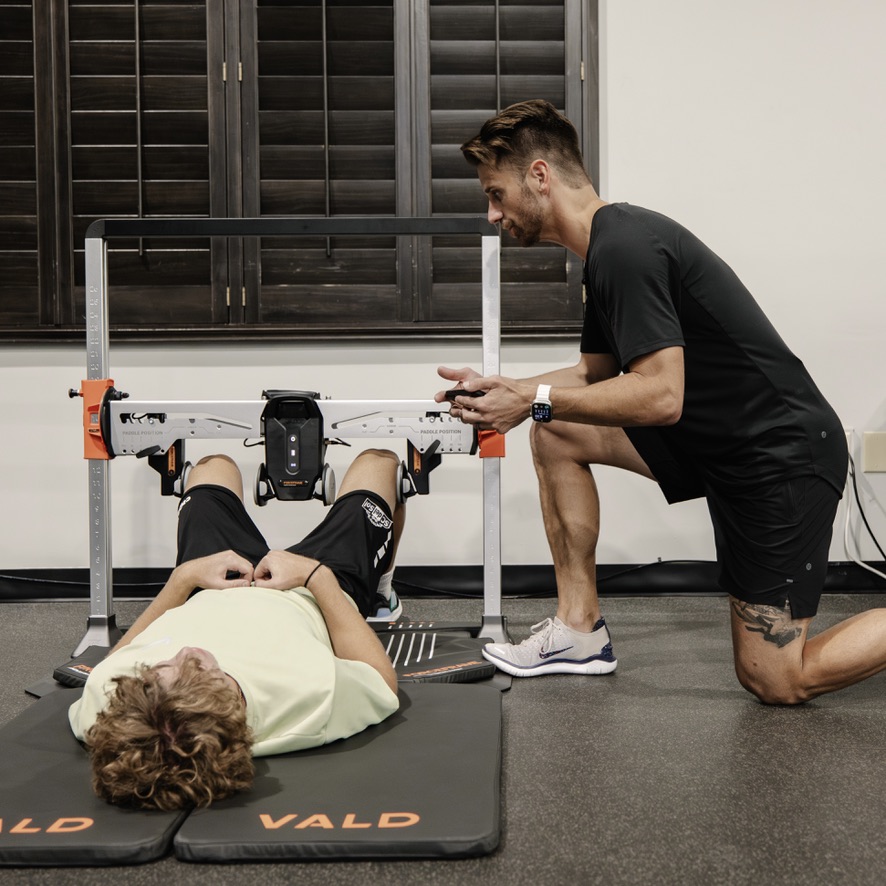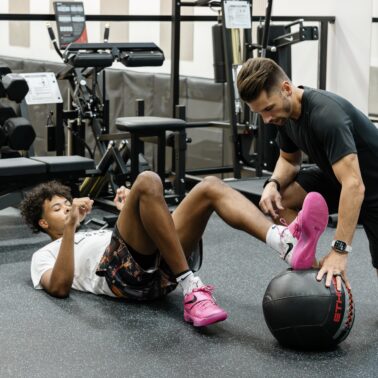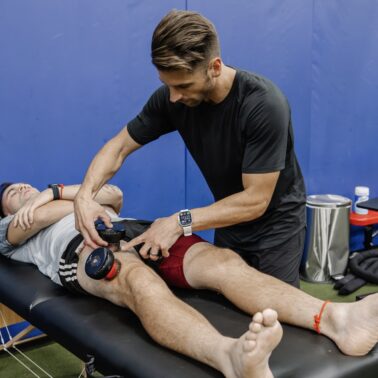Approximate Read Time: 22 minutes
“Training the systems and the parts are not separate from one another nor more important than the other – they simply are complimentary and integral to a high performing injury prevention program.”
What You will learn
- Systems and parts must be trained together.
- Weak links limit performance and raise injury risk.
- Integration builds efficiency, strength, and resilience.
Training the Systems and the Parts: Why Both Matter
In performance training, a debate often simmers beneath the surface: should we prioritize the parts—muscles, joints, and isolated tissues—or the integrated systems that coordinate them? The truth is both perspectives matter. When we treat them as inseparable, athletes become more resilient, efficient, and prepared.
A helpful analogy is the car. The vehicle itself is the system, while the tires, engine, and suspension are the parts. You might manage to drive with a flat tire, but the alignment will suffer, stress will transfer to the suspension, and eventually the steering could fail. The same story unfolds in human performance. A weak hamstring, underpowered quadriceps, or stiff ankle joint creates ripple effects across the entire kinetic chain, forcing inefficient compensations that increase injury risk.
“Athletes don’t move in parts—they move in systems. But weak parts still break the system.”
The Car Analogy Applied to Rehab and Performance
In rehabilitation, this concept is on full display. Take the quadriceps following an ACL reconstruction: if strength doesn’t return fully, the athlete’s entire system struggles to perform tasks like jumping, cutting, or decelerating (Eitzen et al., 2009). The result? The hip, hamstring, or even the contralateral leg compensates, elevating re-injury risk.
On the performance side, think about deceleration. An athlete may have great systemic strength, but if the eccentric capacity of the hamstrings or calves is lacking, the system will fail under high braking forces (Timmins et al., 2016). Weak parts can sabotage even the most well-developed system.
This duality reinforces a principle: performance is only as strong as its weakest part.
Understanding the “Parts”: Local Muscles and Joints
Parts are the building blocks. Every muscle and joint has its own job—producing force, stabilizing, or absorbing load. Training them in isolation ensures they’re capable of contributing to larger movement patterns.
In rehab, part-focused training is often the first step. Muscles can atrophy after surgery, joints lose proprioception, and neural inhibition can limit coordination. Isolated exercises restore strength and control before athletes are reintroduced to whole-body tasks. For example, a post-op ACL patient needs direct quadriceps work before they can safely progress to bounding or sprinting drills (van Melick et al., 2016).
“Isolated strength deficits often dictate whether the system thrives or fails.”
But the lesson applies to healthy athletes, too. Targeted eccentric hamstring training, like Nordic curls, builds the part’s capacity so the system can sprint and decelerate without breaking down (Case et al., 2020).
Understanding the “System”: Integrated Movement
The system refers to the coordination of parts. Compound lifts—squats, deadlifts, plyometrics—train not just strength but the timing and integration of multiple muscle groups. These movements challenge stability, power transfer, and neuromuscular efficiency across the kinetic chain.
System training is also where athletic qualities like speed, agility, and jumping flourish. Grip strength, for example, has been shown to correlate with longevity and overall health (Celis-Morales et al., 2018), because it reflects the systemic integration of neural drive, muscle coordination, and connective tissue strength.
For athletes, system training ensures the car doesn’t just have new tires or a stronger engine—it makes sure all the parts work together to deliver speed, efficiency, and resilience.

The Interplay Between Parts and Systems
Training the parts without connecting them into the system is like upgrading your car’s tires but never aligning them with the suspension. On the flip side, training the system while ignoring weak parts is like flooring the accelerator while one tire has no tread—you’ll get speed, but at the cost of safety and durability.
“Systems training without strong parts builds speed; strong parts without systems training build dysfunction. Both are required.”
Rehab and performance both demand this balance. Early in ACL rehab, part-focused quadriceps work is essential. But unless that strength is reintegrated into sprinting and cutting mechanics, the athlete won’t return to sport at a high level (van Melick et al., 2016). Similarly, in elite soccer, short hamstring fascicles combined with eccentric weakness drastically raise injury risk (Timmins et al., 2016).
This is why progressive programming alternates between strengthening the parts and integrating them into systems. The two aren’t opposing strategies—they are partners.
Evidence from Research: Strength and Injury Risk
Sports science consistently points back to one truth: strength matters. But how that strength is expressed—locally versus globally—shapes performance outcomes.
- Barbell Squat Strength: Collegiate athletes with lower relative squat strength showed higher seasonal injury rates. Male athletes below 2.2x bodyweight and female athletes below 1.6x were more susceptible (Case et al., 2020).
- Quadriceps in ACL Outcomes: Preoperative quadriceps strength strongly predicts knee function up to two years post-reconstruction, emphasizing the importance of restoring part-specific strength (Eitzen et al., 2009).
- Hamstrings in Deceleration: Shorter fascicle length and poor eccentric strength significantly increase hamstring injury risk, showing how one weak link can derail the entire kinetic chain (Timmins et al., 2016).
- Grip Strength and Longevity: In a cohort of 500,000 participants, grip strength was associated with cardiovascular, respiratory, and all-cause mortality. A single part (the hand) became a marker of whole-body systemic resilience (Celis-Morales et al., 2018).
These findings reinforce the car analogy: isolated deficits are often predictive of larger system breakdowns.
Practical Strategies for Performance Coaches
How do we apply this interplay in real life? Here is a practical checklist to follow:
- Identify Weak Links
Testing protocols—force plates, NordBord hamstring assessments, isokinetic dynamometers—help expose whether performance is limited by the system or by a part. For example, an athlete with solid jump metrics but weak eccentric hamstring control has a part holding back the system. - Use Phased Progressions
Rehab often flows from part → system. A quad-focused isometric or eccentric block post-ACL should evolve into plyometric and cutting drills before full return-to-play. - Blend in Training
Even in healthy athletes, both parts and systems should be trained simultaneously. Heavy squats (system) paired with Nordic curls (part) create synergy. Olympic lifts (system) paired with calf isometric training (part) build robustness for sprinting. - Measure Outcomes Beyond Strength
Grip strength, squat ratios, and eccentric measures are more than just numbers—they’re proxies for systemic resilience. Coaches who track them can spot red flags before they become injuries.
For more on how to structure phased of progressions, revisit my framework in The 3P Model: Sports Rehab Framework for Results.
Offseason Systems: Lessons from the NFL
Systems-based training is perhaps most visible in the NFL offseason. As Natalie Kollars shared on Finding Small Wins, the early offseason emphasizes durability and general systems building, while later phases integrate position-specific adaptations.
This seasonal rhythm mirrors the parts-systems relationship: build the global base first, then refine the parts. Athletes who skip the part-focused work (healing old injuries, regaining eccentric strength) can show up in camp with vulnerabilities that resurface when stress levels peak.
Case Study: ACL Rehab and the Weak Link Problem
Few examples better illustrate the parts-versus-systems dynamic than ACL rehabilitation.
Before reconstruction, quadriceps strength is a major predictor of long-term knee function (Eitzen et al., 2009). When the quad doesn’t recover, even the most comprehensive return-to-play program struggles. Athletes may sprint, jump, and cut, but the system is working on borrowed resources—hips, hamstrings, or the contralateral leg compensate, creating inefficiency and risk.
System-level drills like bounding and cutting are essential, but they’re wasted if the quadriceps (the part) can’t contribute. The key is sequencing: restore the part first, then reintegrate it into the system with progressive overload (van Melick et al., 2016).
“System training without restoring the parts is like driving with the parking brake on.”
Deceleration: When the System Is Limited by Parts
Acceleration gets the glory, but deceleration is where games are won and injuries are avoided. Athletes who can stop, cut, and redirect force effectively gain a competitive edge.
Research shows hamstring eccentric weakness and short fascicle length increase injury risk during deceleration-heavy sports (Timmins et al., 2016). Even when the system (coordination, agility) is intact, weak parts limit its ability to tolerate high braking forces.
This is where targeted eccentric work—Nordics, razor curls, isokinetic eccentrics—shores up the parts so the system can perform. It’s not glamorous, but it’s the difference between staying healthy and another pulled hamstring.
Compound Lifts and Velocity: Building the System
Compound lifts like squats and plyometrics don’t just build strength—they train integration. The body learns to transfer force from ground to bar, coordinating multiple joints in real time.
When paired with velocity-based training, compound lifts also teach the nervous system to optimize power output across the force–velocity spectrum. A slow, heavy squat and a fast, explosive jump squat are both system builders—but in different bandwidths.
For a deeper dive on how velocity ties into system-level adaptations, read A Complete Guide to Velocity Based Training in Rehab.
Energy Systems: The Overlooked System
It’s easy to focus only on muscles and joints, but energy systems are the invisible infrastructure supporting every part. Conditioning influences how efficiently an athlete can repeat movements, recover, and sustain performance.
Austin Schoen captured this well on Finding Small Wins, explaining how rethinking heart rate zones helps athletes match training stress to their sport-specific demands. By integrating energy system development with movement training, coaches ensure parts aren’t overloaded simply because the systemic “engine” is underprepared .
Conclusion
Training systems and parts is not a choice—it’s a necessity. Both are required to build resilient, high-performing athletes. As Dr. Pat Davidson emphasized on Finding Small Wins, mastery comes from understanding how individual capacities interact within the broader whole. Athletes need both parts tuned and systems coordinated. Without this integration, performance gains are fragile. With it, they become durable.
Here are the lessons to carry forward:
- Systems and parts must be trained together.
- Weak links limit performance and raise injury risk.
- Eccentric strength often decides whether the system holds or fails.
- Compound lifts and velocity work integrate parts into systems.
- Energy systems connect the invisible dots between parts and performance.
Whether you’re restoring quadriceps after ACL surgery, reinforcing hamstrings for deceleration, or teaching an athlete how to coordinate force through a clean pull, the principle is the same: strong parts make stronger systems, and robust systems protect the parts.
“Training muscles is important. Training movements is important. One cannot thrive without the other.”
Free Download
Watch More Like This
Read More Like This
Related Podcasts
References
Timmins RG, Bourne MN, Shield AJ, Williams MD, Lorenzen C, Opar DA. Short biceps femoris fascicles and eccentric knee flexor weakness increase the risk of hamstring injury in elite football (soccer): a prospective cohort study. Br J Sports Med. 2016;50(24):1524-1535. doi:10.1136/bjsports-2015-095362
Eitzen I, Holm I, Risberg MA. Preoperative quadriceps strength is a significant predictor of knee function two years after anterior cruciate ligament reconstruction. Br J Sports Med. 2009;43(5):371-376. doi:10.1136/bjsm.2008.057059
van Melick N, van Cingel REH, Brooijmans F, Neeter C, van Tienen T, Hullegie W, Nijhuis-van der Sanden MWG. Evidence-based clinical practice update: practice guidelines for anterior cruciate ligament rehabilitation based on a systematic review and multidisciplinary consensus. Br J Sports Med. 2016;50(24):1506-1515. doi:10.1136/bjsports-2015-095898
Case MJ, Knudson DV, Downey DL. Barbell squat relative strength as an identifier for lower extremity injury in collegiate athletes. J Strength Cond Res. 2020;34(5):1249-1253. doi:10.1519/JSC.0000000000003526
Celis-Morales CA, Welsh P, Lyall DM, et al. Associations of grip strength with cardiovascular, respiratory, and cancer outcomes and all cause mortality: prospective cohort study of half a million UK Biobank participants. BMJ.2018;361:k1651. doi:10.1136/bmj.k1651





